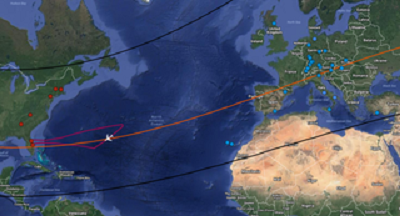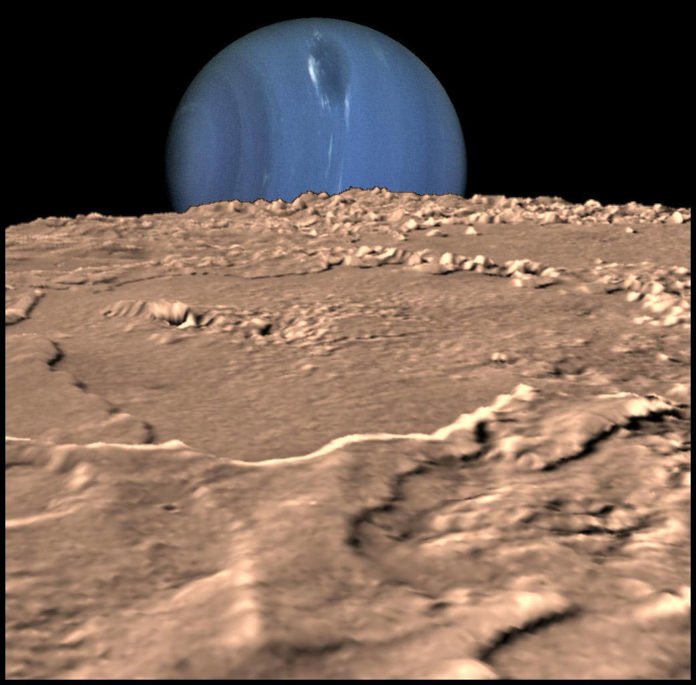Scientists on the Stratospheric Observatory for Infrared Astronomy (SOFIA), are getting ready to study atmosphere on the Neptunian moon- Triton. According to reports, on Oct 5, Triton will pass nearby the faraway star and will cast its shadow on earth’s surface.
Scientists will get only a few minutes for the study. This will be the first chance to investigate Triton’s atmosphere in 16 years.
As it traverses a faraway star it will block the star’s light and form an eclipse-like event called an occultation. For the study, scientists chose the specially equipped Boeing 747SP aircraft to make observations.

Credits: DSI/ Karsten Schindler (Map data, Google)
This is for the first time, the Triton passing through bright stars, thus it may make observations difficult. Scientists hope that by using SOFIA’s 100-inch (2.5-meter) onboard telescope and three powerful instruments, they could better study and characterize the atmosphere of the Neptunian moon, including its temperature, pressure, and density.
Previous observations of Triton in 1989 suggests that Triton’s atmosphere is made mostly of nitrogen and is distorted at different locations by its high winds and strong tides. Through this new observation, scientists will observe how the atmosphere varies at different altitudes.
Ted Dunham, an astronomer from the Lowell Observatory in Arizona said, “Catching Triton’s shadow as it races across Earth’s surface at more than 37,000 mph (17 km/s) while the aircraft is traveling at Mach 0.85 (approximately 652 mph), is no small feat. To ensure that they are in the right place at the right time, we have made advanced observations of Triton and the star with multiple telescopes to determine the location of their shadow.”
“SOFIA is the only observatory able to position itself directly in the shadow’s centerline while avoiding any obscuring clouds. With the dedicated SOFIA team and three onboard instruments, we can make the precise measurements necessary to study Triton’s atmosphere in great detail.”
Triton has solid tides since it is near Neptune, substantially nearer than our moon is to Earth. These powerful tides combined with its strong winds, change the shape of its atmosphere. To measure the overall shape of Triton’s atmosphere, the researchers are also teaming with more than 30 ground-based telescopes across the Eastern United States and Europe. They will make simultaneous observations of different areas of Triton’s atmosphere to get a global view of its shape.
Kimberly Ennico Smith, SOFIA project scientist at NASA’s Ames Research Center said, “The ground-based campaign augments both the visible and infrared data from SOFIA, to give us a global perspective of Triton’s atmosphere.”
